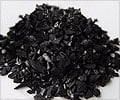Carbon cycling might have been much smaller during last ice age than in the current, warmer climate, a new study has indicated.

In past times, during the transition between an ice age and a warm period, atmospheric CO2 concentrations changed by some 100 parts per million (ppm) - from an ice age value of 180 ppm to about 280 ppm during warm periods.
Scientists can reconstruct these changes in the atmospheric carbon stock using direct measurements of atmospheric CO2 trapped in air bubbles in the depth of Antarctica's ice sheets.
However explaining the cause of these 100ppm changes in atmospheric CO2 concentrations between glacial and interglacial climate states - as well as estimating the carbon stored on land and in the ocean - is far more difficult.
The researchers, led by Dr Philippe Ciais of the Laboratoire des Sciences du Climat et l'Environnement near Paris, ingeniously combined measurements of isotopes of atmospheric oxygen (18O) and carbon (13C) in marine sediments and ice cores with results from dynamic global vegetation models, the latter being driven by estimates of glacial climate using climate models.
"The difference between glacial and pre-industrial carbon stored in the terrestrial biosphere is only about 330 petagrams of carbon, which is much smaller than previously thought," said Dr Marko Scholze of the University of Bristol's School of Earth Sciences, co-author of the study.
Advertisement
From these results, the authors concluded that the cycling of carbon in the terrestrial biosphere - that is, the time between uptake by photosynthesis and release by decomposition of dead plant material - must have been much smaller than in the current, warmer climate.
Advertisement
The authors suggested that this inert carbon should have been buried in the permanently frozen soils and large amounts of peat of the northern tundra regions.
Source-ANI













